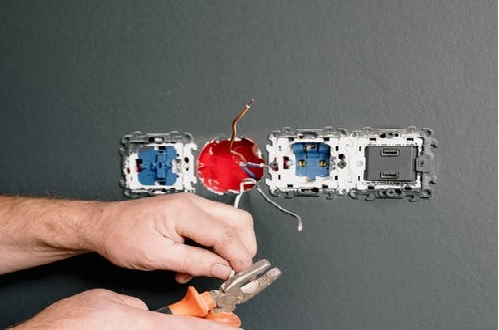The most definitive qualities of a Field Service organization is well established practices and client focused set up. In any case, best-in-class service organizations. However, best-in-class service providers know that it takes more than that to stay ahead of the game. Here are three steps you can take to make your company more competitive in the field services industry.
Make Customer Satisfaction a Priority
Best-in-class service providers know that the most important metric is customer satisfaction. That is why they are taking great strides to adopt measures that consistently target this metrics. From tackling issues like real-time repairs to data analysis, successful service providers are capitalizing on all tools available to ensure their customer’ss needs are met quickly and efficiently.
• Make communications easier: Offering alternatives to phone and email-based customer service is one way best-in-class companies are adjusting their business processes to reflect customer habits. Not only is this the more flexible option for customers -available 24/7, no need to wait on hold for customer service representatives, adjustable to the customer’s own schedule – it is also a more cost-effective alternative for service providers.
• Focus on solutions: Working with field service management (FSM) software is making it possible for service providers to collect and assess large amounts of data across an extensive client base. By comparing and contrasting data sets, the best-in-class are able to detect repeated patterns in machine breakdowns and offset these disruptions with tailored maintenance schedules. This ensures less downtime for customers and stable productivity rates. In addition, accumulated data provides insight into recurring problems that helps improve first-time-fix rates and offer quality service.
![]()
• Keep customers involved: Keeping customers in the loop regarding scheduling, arrivals, and real-time status updates is key for customer satisfaction. Customers are looking for a transparent service experience that allows for their active involvement. Allowing customers to schedule appointments that work for them and track status in real-time gives them control over their service experience. Customers who knows that you value their time are customers who will value your services.
Explore new approaches to Field Service
Good service providers know the company and their customers better than anyone. They know what works and what does not. Best-in-class service providers take this one step further. They know that being good at something is not the same as being great at something. Sometimes a company needs to adapt its business strategy to new models and technologies. Keeping an eye on trends affecting the industry is essential for staying ahead of the pack.
• IoT and predictive technology: The inter-connectivity made possible through IoT is powering a number of other innovations triggered by the digital transformation. For example, the aforementioned messenger systems changing customer service often rely on QR codes that are scannable using mobile devices. And in much the same way, machines fitted with sensors are communicating with connected devices to alert service technicians and users to imminent breakdowns or repair needs. This kind of predictive technology is making it possible to fix problems before they occur.
• Crowd service: With predictive technology comes a greater need for manpower. The best-in-class are turning to crowd service solutions to accommodate the need for skilled and experienced service technicians. By integrating a crowd – a pool of service technicians made up of the company’s own employees, partners, subcontractors, and freelancers – into their labor force, service providers are sure to have ready access to a capable technician whenever necessary. This is making it possible to provide preemptive and real-time fixes.
• Artificial Intelligence and Augmented Reality: With the increase in data from machine sensors, FSM software, and crowd service technicians, it is becoming increasingly difficult to rely on manual scheduling. The best-in-class are turning to AI to help sift through all the data and determine the best possible scheduling solutions. Given the customer’s history, device issue, location, technician’s expertise, road and weather conditions, and more, an AI-powered scheduling system can immediately determine the best woman or man for the job. And should a service technician lack some of the necessary expertise, he or she can count on augmented reality solutions like AR goggles or mobile device overlays to help locate and fix an issue. Service technicians can even use AR to involve an offsite specialist in the repair process.
• Virtual reality and digital twins: Virtual reality has also been a game changer. It is making it possible for companies to create virtual models of devices, digital twins, before investing the financial and manpower resources into the manufacturing. These digital twins not only make it possible for companies to determine how a device will best operate or perhaps even malfunction, they can also track and monitor the manufactured device across their lifecycle. This is a real attribute for predictive maintenance.
Though your company might not need all these technologies to operate successfully, studies have shown that best-in-class are 45% more likely to monitor several parameters to perform predictive and proactive maintenance. They are also 70% more likely to offer their service technicians resources accessible while on site to help them get the job done. With this kind of dedication by the best-in-class to provide optimized service, it is a risk to your competitive edge not consider all the options available.
Promote employee development
Technology is nothing without the people implementing it. Employee engagement is essential for best-in-class service providers. They take special care to ensure their employees are motivated, well-trained, and an integral part of business development.
• Manage your workforce: There is of course a challenge to managing a mobile workforce. With service technicians scattered across a number of locations on any given day, service providers must work hard to optimize communications and training to guarantee consistent and reliable service. If service technicians do not feel like a valued and integrated part of the business, they are less likely to perform well.
• Adapt to the Changing Times: The demands on service technicians are changing with the digital transformation. By that same token, the way the future labor force is approaching career goals is also shifting. With a new generation of employees entering the labor market, companies need to take into account new demands for flexibility, mobility, and diversity. This is especially obvious when considering millennial, who are more drawn to jobs with flexible work schedules and locations, and a diverse set of responsibilities. Adapting your business model to align with these interests will be essential for attracting new talent.
It is not an easy to task to implement all these changes in one fell swoop. However, the best place to start when considering how to improve your business performance is with the people most affected by your practices. Engaging with your customers and employees will provide the kind of insight you need to transition from good to great! co-ops realize that it takes more than that to remain on top of things.

